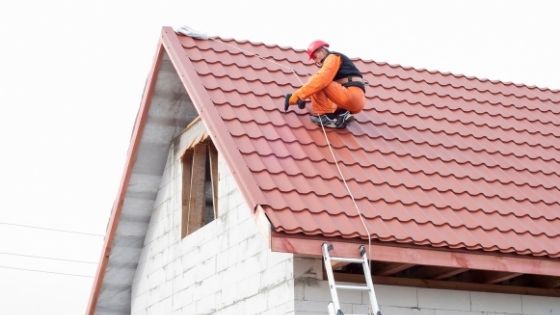The roof is a critical part of a home, and it’s important to maintain the integrity of your roof. When you’re ready for a replacement, there are many factors that can impact how much work will be involved in getting your new roof installed. The cost of materials, the complexity of installation, or any other extra requirements may all have an effect on the total amount you’ll pay for this service. Fortunately, we’ve put together some helpful information to let you know what else impacts your final bill, so you don’t have to go through all these calculations yourself!
The Size of Your Roof
The cost of your roof depends on the size of your roof. A small home with a flat, simple roof can be completed for $3000 to $5000, and a large house with complex angles and valleys may cost upwards of $25,000 (approx.). This is practically one thing you can not change, but always be prepared to estimate the cost.
Geographical Area
If you live in a warmer climate, the cost of your roof will be less than if you lived in a colder weather. If you live in an area with more snow and ice, the cost for your roof is going to be higher because it needs to withstand harsher conditions. This is because each one has a different purpose and uses other materials, methods to get installed. If you aren’t sure how much contractors charge in your area, contact the best roofing repairs in Los Angeles, California can be your best bet!
Condition of Your Existing Roof
It’s important to know the condition of your roof before you start looking for a contractor. Roofing costs can vary greatly depending on what needs to be done, so knowing this upfront will help you save money in the long run. If you have a newer or in good condition, it will usually be less expensive than if it needs repair.
The Design and Shape You Desire
The cost of your roof depends on the design and shape you desire. The simplest style is a flat roof, but it may not be the most reliable in terms of weather protection or energy efficiency. A gable roof with an overhang will provide more coverage from rain, snow, and sun exposure. This type of design can also include vents to help release the heat trapped inside during warmer months. But if you want the highest level of insulation for your home, then a hip-gabled double sloped roof might be best for you!
The Materials Your Contractors Use
The cost of your roof can vary significantly, depending on the type of materials that are used. The most popular types of roofing materials are asphalt shingles, metal roofs, and cedar shake shingles. Asphalt shingles are one of the cheapest options for a new roof because they don’t require much material to install. Metal roofs will generally be more expensive than an asphalt roofs since they are made of heavier metals like aluminum or steel. Cedar shake shingle roofs have higher installation costs but need to be replaced less often than other types of materials when properly cared for.
The cost collectively depends on many factors, including material prices, size, complexity, and local labor rates, among others.
Waste Factor
The waste factor is an important calculation for roof contractors. It can vary based on style or materials, but it’s typically around 10-15%. Waste factor accounts for overlapping valley & hip pieces of material and cut off at flashings and penetrations plus ends that are not covered by shingles.
Roof Slope Factor
The slope factor of the roof also contributes to the total square footage. If measuring from below-grade levels like in many homes today, you need both pitch and slope factors present because they will differ depending on where along that line measurement gets taken! You can find this out with a calculator, but it’s typically simpler if your contractor has access and knows how to use an online calculator (they may even have charts).
Roof Square Footage
The cost of your roof depends on many factors, but the most important one is the square footage. When you call a contractor or put out an estimate request for bids, they will ask for this number to know how much material and labor are needed. If you’re not sure how to determine your roof’s square footage, follow these tips:
- Find the length by multiplying the width by itself
- Add up all four sides (length + width + height)
- Divide that by 9 (since there are nine squares per side).
You’ve done your homework and found a reputable roofer. Now it’s time to start thinking about the cost of replacing your roof. If you are unsure what is to be done, reading the above factors will help you cut costs and prepare the proper budget for your roof. If you are looking for someone who can help you out.

















